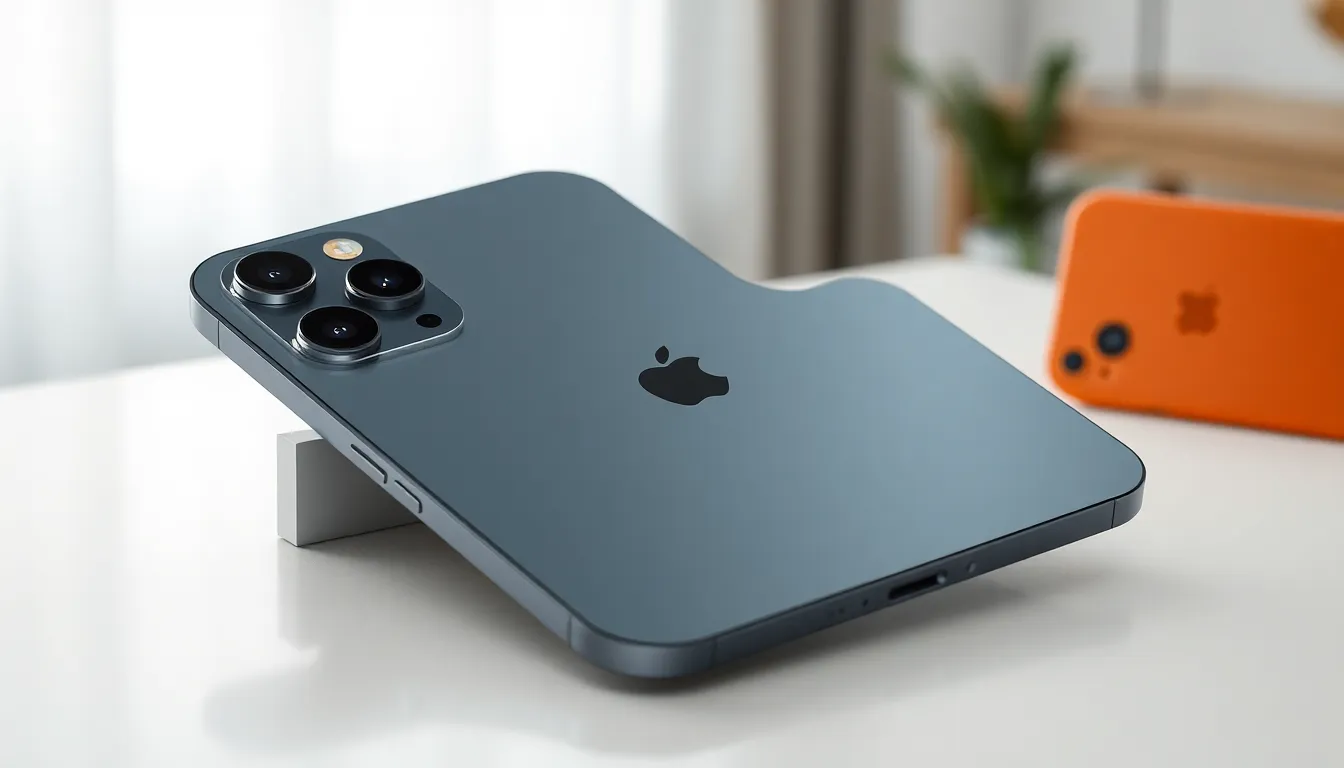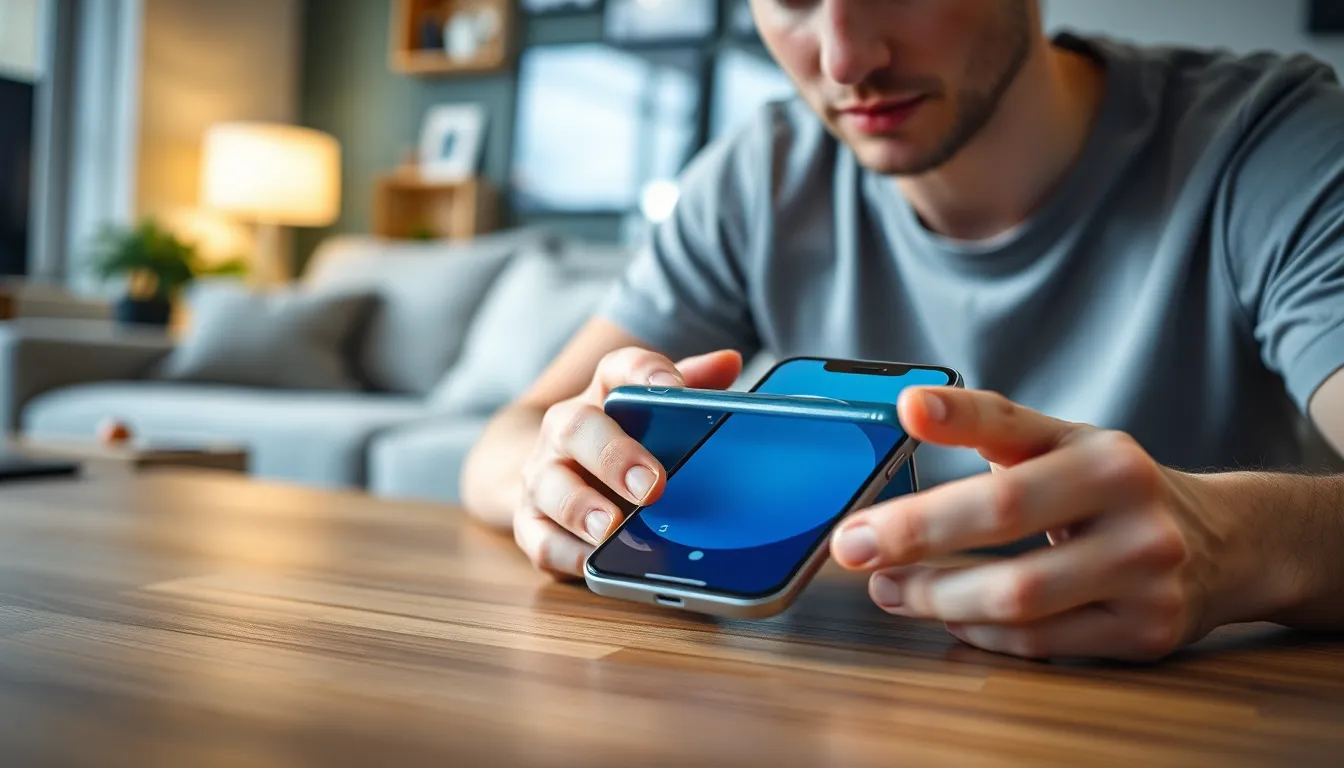The iPhone 15 Plus has everyone buzzing, and not just because of its sleek design and impressive features. One burning question keeps popping up: is it really made of titanium? Picture this: a phone that’s as tough as a superhero yet still manages to look effortlessly stylish. If Apple’s latest device has you curious, you’re not alone.
Titanium is known for its strength and lightweight properties, making it a desirable material for everything from aircraft to jewelry. But does the iPhone 15 Plus join the elite club of titanium devices? As tech enthusiasts dive into the details, the answer may surprise you. Get ready to uncover the truth behind this metallic mystery and decide if the iPhone 15 Plus is worth the hype—or if it’s just another shiny gadget in a crowded market.
Table of Contents
ToggleOverview of the iPhone 15 Plus
The iPhone 15 Plus features a larger display, appealing to users who prefer bigger screens. Equipped with advanced technologies, it delivers impressive performance and enhanced battery life. Many anticipate its durability, drawing interest in the materials used in its construction.
Rumors suggest that the device may incorporate titanium, known for its strength and lightweight attributes. Titanium frames can enhance the device’s resilience against drops and scratches. This material choice would represent a significant upgrade from previous aluminum models.
Expect premium aesthetics with the iPhone 15 Plus, potentially setting it apart in terms of design. Enhanced durability may lead to fewer repairs and longer product life. Users might appreciate the tactile feel offered by titanium, which could appeal to a wider audience.
Specifications indicate the iPhone 15 Plus includes features like an upgraded camera system and improved processing power. Such enhancements position it favorably against competitors in the smartphone market. Most enthusiasts are eager to see how these specifications translate into real-world usage.
In essence, the excitement surrounding the iPhone 15 Plus hinges on its potential titanium construction. This dynamic material could redefine user experience, maximizing both functionality and design appeal. Users interested in durability and performance will find much to discuss as the release date approaches.
Design and Build Quality

The iPhone 15 Plus exhibits a noteworthy focus on design and build quality, with particular attention to material selection. Exploring the use of titanium raises interest among tech enthusiasts.
Material Comparison
Comparing materials in smartphone construction reveals crucial differences. Titanium stands out due to its exceptional strength and lightweight properties. Its resilience against wear and tear surpasses traditional materials, presenting an attractive option for modern devices. Many manufacturers prefer titanium for premium models, attracting users seeking durability without compromising aesthetics. Advanced manufacturing techniques enhance titanium’s potential, making it ideal for devices like the iPhone 15 Plus.
Titanium vs. Aluminum
Titanium and aluminum present distinct advantages for smartphones. While aluminum offers lightweight characteristics, it lacks the strength seen in titanium. Durability concerns frequently arise with aluminum, especially for high-impact scenarios. In contrast, titanium withstands drops and scratches more effectively, leading to fewer repairs. Users often notice a perceived premium feel associated with titanium that enhances overall device elegance. Ultimately, the transition to titanium could redefine user experience for the iPhone 15 Plus, addressing both functionality and style.
Features of the iPhone 15 Plus
The iPhone 15 Plus boasts a range of standout features that enhance user experience. Users can enjoy a 6.7-inch Super Retina XDR display, delivering vibrant colors and excellent contrast for an immersive viewing experience. Equipped with A16 Bionic chip, the device offers impressive processing power, ensuring smooth multitasking and efficient performance even under demanding conditions.
A dual-camera system enhances photography capabilities, featuring a 48MP main sensor and improvements in low-light performance. Photographers appreciate the advanced computational photography features, such as Night mode and Cinematic mode, that elevate image quality. Battery life proves to be substantial, with lifespans reportedly reaching up to 26 hours in talk time, satisfying users who depend on their devices throughout the day.
Materials play a significant role in the iPhone 15 Plus design. Titanium construction offers strength while reducing overall weight, distinguishing this model from previous aluminum versions. Enhanced durability against drops and scratches bolsters reliability, appealing to users prioritizing sturdiness in mobile devices.
Colors available include classic options along with new finishes that enhance the device’s premium feel. Advanced connectivity features like 5G support guarantee faster internet speeds and more robust overall performance for streaming and gaming.
Enhanced software features, including iOS updates and security enhancements, ensure that the device remains current with the latest technology trends. User experience improves even further with additional options, such as customizable widgets and updated privacy settings.
Overall, the integration of titanium, advanced camera technology, and unique software offerings mark the iPhone 15 Plus as a formidable contender in the smartphone market.
Performance and Durability
The iPhone 15 Plus showcases promising performance and durability features, particularly with its rumored titanium construction. This shift raises expectations for both robustness and style in smartphone design.
Impact Resistance
Titanium provides superior impact resistance compared to aluminum. The material can absorb shocks effectively, minimizing damage during accidental drops. Even in demanding environments, devices constructed with titanium tend to fare better over time. Users can expect the iPhone 15 Plus to maintain its integrity under stress, potentially reducing the need for repairs. Evidence points to titanium’s resilience, making this an appealing option for individuals who prioritize durability in their devices.
Scratch Resistance
Scratch resistance stands out as another key benefit of titanium in the iPhone 15 Plus. Unlike aluminum, which easily shows wear, titanium’s surface is less prone to scratches. This factor enables the device to retain its sleek appearance longer. Everyday usage, which often leads to unsightly scratches on other materials, poses less of a threat with titanium. Users can enjoy a premium look without constant worry about minor cosmetic damage, making the iPhone 15 Plus an attractive choice for those valuing aesthetics alongside functionality.
Benefits of Titanium in Smartphones
Titanium offers multiple advantages for smartphone construction. Enhanced durability stands out as a key benefit; titanium effectively withstands impacts and minimizes damage during drops. Users appreciate how well titanium can resist scratches, ensuring a sleek appearance over time.
Lightweight characteristics of titanium contribute significantly to overall device comfort. A smartphone made with titanium provides a robust feel without adding excess weight. This balance enhances the overall user experience, making devices easier to handle throughout the day.
Another notable feature is the resistance to corrosion. Titanium remains largely unaffected by moisture, reducing the wear caused by the elements. Users can trust that their devices will maintain performance even in challenging environments.
Aesthetics play a crucial role in smartphone appeal. Titanium’s premium finish elevates the visual presentation, allowing manufacturers to create elegant designs. This distinctive look can attract consumers and set premium models apart from their aluminum counterparts.
When it comes to thermal conductivity, titanium excels too. The material effectively dissipates heat, helping to manage internal temperatures during demanding tasks. This property can boost performance, particularly in high-usage scenarios like gaming or video streaming.
Cost considerations come into play with titanium use as well. While the material may increase initial production costs, the long-term benefits can outweigh these expenses. Fewer repairs and a longer lifespan contribute to overall value for consumers.
Finally, the transition to titanium reflects a broader trend toward enhanced materials in mobile technology. As consumers seek durability and style, manufacturers are likely to follow this pathway. The iPhone 15 Plus exemplifies this shift, possibly making it a favorite among users seeking both sophistication and resilience in their devices.
The anticipation surrounding the iPhone 15 Plus is palpable as it promises to redefine user expectations with its potential titanium construction. This innovative material not only enhances durability but also elevates the device’s aesthetic appeal. With impressive performance features and a commitment to longevity, the iPhone 15 Plus stands out in a crowded market.
As consumers weigh their options, the combination of advanced technology and premium materials may make the iPhone 15 Plus a compelling choice. Its ability to withstand everyday wear and tear while offering a sophisticated design could set a new standard for smartphones. Ultimately, the iPhone 15 Plus is poised to capture attention and deliver an exceptional user experience.






